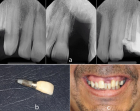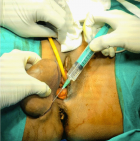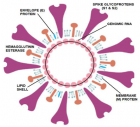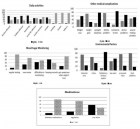Abstract
Research Article
Asynchronous flowering in clonal seed orchards - An effective strategy for alternative management
Soma Mondal*, Ashutosh Srivastava, Geeta Joshi and HC Yashavantha Rao
Published: 15 May, 2019 | Volume 3 - Issue 2 | Pages: 036-041
Tropical forests have long been of interest to biologists because of their high species diversity and their complicated patterns of community organization. The recent ecological studies which have demonstrated that tropical trees are diverse in their reproductive biology and dynamic population structure. Asynchronous flowering among the clones in a clonal seed orchard is an inherent problem resulting in poor seed and fruit set in them. These results in the complete defeat of the prime objective of establishment of clonal seed orchards (CSOs) i.e. abundant quality seed production poor flowering and asynchronous flowering between the clones are a major bottleneck in higher seed set in these clonal seed orchards across the country. Asynchrony found between clones may be attributed to the origin of clones, which are collected from different zonal populations as revealed by isoenzyme and DNA markers studies. This article reviews the work done in CSOs across the world and suggests an alternate strategy in designing the clonal seed orchards of the future.
Read Full Article HTML DOI: 10.29328/journal.jpsp.1001029 Cite this Article Read Full Article PDF
Keywords:
Clonal seed orchards; Fruit set; Flowering; Girdling; Prunning
References
- Sett R, Mishra JP, Rana PK. Seed production of teak in different orchards of central India: the present scenario. Int J Sci, EnvironTechnol. 2016; 5: 969-990. Ref.: https://tinyurl.com/y6rnagov
- Yuan H, Niu S, El-Kassaby YA, Li Y, Li W. Simple Genetic Distance-Optimized Field Deployments for Clonal Seed Orchards Based on Microsatellite Markers: As a Case of Chinese Pine Seed Orchard. PLoS ONE. 2016; 11: e0157646. Ref.: https://tinyurl.com/y5pfk6v3
- Zhang HX, Shen XH. Progress on reproductive system of forest seed orchards. Scientia Silvae Sinicae. 2002; 38: 129–134. Ref.: https://tinyurl.com/yyarmcyx
- Ertekin M. The Molecular Basis of Plant Genetic Diversity. In: Genetic Diversity of Seed Orchard Crops. 2012. Ref.: https://tinyurl.com/yymz27f8
- Burczyk J, Chalupka W. Flowering and cone production variability and its effect on parental balance in a Scots pine clonal seed orchard. Annales des sciences forestières, INRA/EDP Sciences. 1997; 54: 129-144. Ref.: https://tinyurl.com/yyw3982z
- Krishna H, Alizadeh M, Singh D, Singh U, Chauhan N, et al. Somaclonal variations and their applications in horticultural crops improvement. 3 Biotech. 2016; 6: 54. Ref.: https://tinyurl.com/y489a6hj
- Szmidt AE. Genetic composition of seed orchard crops. Forest Ecology and Management. 1987; 19: 227-232. Ref.: https://tinyurl.com/y4z2c5n9
- Larsen CS. Genetics in Silviculture. Oliver & Boyd, Edinburgh, Scotland. 1956; 224. Ref.: https://tinyurl.com/y2obvk98
- Werner M. Effects on plant yield, height growth and height variation in fractionation of a grain seed lot (Effects of spruce seed grading on plant percent, height growth and variation). Inf. Skogsforad. Institute for skogsforbattring, Ekebo.1976; 4.
- Srivastava A, Devagiri GM, Gunaga RP, Vasudeva R, Rathore TS, et al. Induction of flowering in teak clonal seed orchard-a case study. Indian J Trop. 2008; Biodivers.16; 33-42.
- Larsen CS. Genetics in Silviculture, Oliver & Boyd, Edinburgh, Scotland. 1956, 224. Ref.: https://tinyurl.com/y2obvk98
- Zobel BJ, Barber J, Brown CL, Perry TO. Seed orchards; their concept and management. J Tropical Forest. 1958; 56: 815-825. Ref.: https://tinyurl.com/yyaevukv
- El-Kassaby YA, Askew GR. Seed orchards and their genetics. In: Mandal AK, Gibson GL. (Ed.), Forest genetics and tree breeding, CBS Publishers and Distributors. Daryaganj. New Delhi. India. 1998; 103–111.
- Kumaravelu G. Teak in India. In Henry Wood (ed.) Teak in Asia, FORSPA Publication. No. 4, Bangkok. 1993; 27–34.
- Kedharnath S, Matthews JD. Improvement of teak by selection and breeding. Ind For. 1962; 88: 277–284. Ref.: https://tinyurl.com/y5r294fb
- Palupi ER, Owens JN. Reproductive phenology and reproductive success of teak (Tectonagrandis). Int J Plant Science. 1998; 159: 833-842. Ref.: https://tinyurl.com/yy8dg8sv
- Gunga RP. Genetic variation for phenology in a clonal seed orchard of teak. A thesis submitted to Department of Forest Biology and Tree improvement college of Forestry, Sirsi. 2000.
- Griffin AR. Clonal variation in Radiata pine seed orchards. II. Flowering phenology. Aus Forest Res. 1984; 14: 271-281. Ref.: https://tinyurl.com/y2bjqml4
- Gunaga RP. Flowering in seed orchards: Pattern, consequences and of flowering. Seminar report of the Master of Science in Forestry, submitted to the Dept. of Forest Biology and Tree Improvement, College of Forestry Sirsi. 1999; 35.
- Pharis RP, Tomchuk D, Beall FD. Promotion of flowering in white spruce (Piceaglauca) by gibberellin A4/7, auxin (naphthaleneacetic acid), and the adjunct cultural treatments of girdling and Ca(NO3)2 fertilization. Canadian J Forest Research. 1986; 16: 340–345.
- Management of Eucalypt seed orchard with pacloburtrazol. in: proc of Australian forest growers conference on. Faces of farm forestry. Launceston. Tasmania .1992; 235-238.
- Rawat MS, Uniyal DP, Vakshasya RK. Variation in the model teak seed orchard. New Forest, Dehra Dun. Ind J For. 1992, 118: 60-65. Ref.: https://tinyurl.com/yy27fdcn
- Gunaga RP, Vasudeva R. Variation in flowering phenology in a clonal seed orchard of teak. JTree Sci. 2002b; 21: 1-10. Ref.:
- Neelayv R, Bhandari RS, Negi KS. Effect of insecticidal and hormonal spray on the production of fruits in teak seed orchards. Ind For. 1983; 109: 829–837. Ref.: https://tinyurl.com/yxp2mrys
- Pharis RP, Tomchuk D, Beall FD et al. Promotion of flowering in white spruce (Piceaglauca) by gibberellin A4/7, auxin (naphthaleneacetic acid), and the adjunct cultural treatments of girdling and Ca(NO3)2 fertilization. Canadian J Forest Research. 1986; 16: 340–345.
- Smith RF. Effects of stem injections of gibberellins A(4/7) and paclobutrazol on sex expression and the within-crown distribution of seed and pollen cones in black spruce (Piceamariana). Canadian J Forest Research. 1998; 28: 641-651. Ref.: https://tinyurl.com/y2xpulah
- Hetherington S, Jones KM, Koen TB. Stimulation of bud production in Eucalyptus globulus by paclobutrazol application. In Proceedings: IUFRO Symposium on Intensive Forestry: The role of Eucalypts, Durban, South Africa. (Ed) APG Schonau. 1991; 1: 39-41. Ref.: https://tinyurl.com/yymgmkvp
- Srivastava A. Quantitative analysis of variation for flowering phonology and fruit yield in a Clonal Seed Orchard of Teak. Ind J Tropical Biodiversity. 2013; 16: 143-154.
- Sweet GB. Seed orchards in development. Tree Physiology. 1994; 15: 527-530. Ref.: https://tinyurl.com/y2ajazzs
- Baradat P. Durel CE, Pastuszka P. The polycross seed orchard: an original concept. In Proc. AFOCEL/IUFRO Conference, Bordeaux. France. 1992; 1: 181-188.
- Wong CY. Flower stimulation techniques for mature Gmelina arborea Roxb. Trees. Malaysian Forester. 1987; 50: 79-86. Ref.: https://tinyurl.com/y3mty8nj
- Gunaga RP. Genetic Variation for Phenology in a Clonal Seed Orchards of Teak (TectonagrandisLinn.f). M.Sc. Forestry Thesis, Department of Forest Biology and Tree Improvement, College of Forestry, Sirsi campus, University of Agricultural Sciences Dharwad: 2000; 128.
Figures:
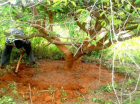
Figure 1
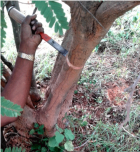
Figure 2
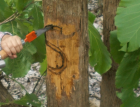
Figure 3
Similar Articles
-
Asynchronous flowering in clonal seed orchards - An effective strategy for alternative managementSoma Mondal*,Ashutosh Srivastava,Geeta Joshi,HC Yashavantha Rao. Asynchronous flowering in clonal seed orchards - An effective strategy for alternative management . . 2019 doi: 10.29328/journal.jpsp.1001029; 3: 036-041
-
Bees, Butterflies, and Beyond the Diverse Pollinators, an Essence for the Reproductive Success of Flowering PlantsAmmir Hassan*, Shamiya Hassan, Mohd Abdul Nasir. Bees, Butterflies, and Beyond the Diverse Pollinators, an Essence for the Reproductive Success of Flowering Plants. . 2024 doi: 10.29328/journal.jpsp.1001135; 8: 065-073
Recently Viewed
-
Hepatic Pseudolymphoma Mimicking Neoplasia in Primary Biliary Cholangitis: A Case ReportJeremy Hassoun,Aurélie Bornand,Alexis Ricoeur,Giulia Magini,Nicolas Goossens,Laurent Spahr*. Hepatic Pseudolymphoma Mimicking Neoplasia in Primary Biliary Cholangitis: A Case Report. Arch Case Rep. 2024: doi: 10.29328/journal.acr.1001115; 8: 152-155
-
Prevention of Atrial Fibrillation using Vaughan Williams Class IC Drugs for Multiple Premature AtrialContractions: A Clinical Observational StudyAkira Yamaguchi*. Prevention of Atrial Fibrillation using Vaughan Williams Class IC Drugs for Multiple Premature AtrialContractions: A Clinical Observational Study. J Cardiol Cardiovasc Med. 2024: doi: 10.29328/journal.jccm.1001198; 9: 158-163
-
In Coronary Angiography, Transradial Versus Transfemoral Access: What Are Patients’ Perspectives?Zeynep Kumral,Halil İbrahim Yıldırım,Yağmur Kurşun,Fatmanur Kodal,Mehmet Kış. In Coronary Angiography, Transradial Versus Transfemoral Access: What Are Patients’ Perspectives?. J Cardiol Cardiovasc Med. 2024: doi: 10.29328/journal.jccm.1001200; 9: 172-176
-
The epidemiology, evaluation, and assessment of lateral ankle sprains in athletesG Javier Cavazos Jr.*,Lawrence B Harkless. The epidemiology, evaluation, and assessment of lateral ankle sprains in athletes. J Sports Med Ther. 2021: doi: 10.29328/journal.jsmt.1001052; 6: 008-017
-
Sinonasal Myxoma Extending into the Orbit in a 4-Year Old: A Case PresentationJulian A Purrinos*, Ramzi Younis. Sinonasal Myxoma Extending into the Orbit in a 4-Year Old: A Case Presentation. Arch Case Rep. 2024: doi: 10.29328/journal.acr.1001099; 8: 075-077
Most Viewed
-
Evaluation of Biostimulants Based on Recovered Protein Hydrolysates from Animal By-products as Plant Growth EnhancersH Pérez-Aguilar*, M Lacruz-Asaro, F Arán-Ais. Evaluation of Biostimulants Based on Recovered Protein Hydrolysates from Animal By-products as Plant Growth Enhancers. J Plant Sci Phytopathol. 2023 doi: 10.29328/journal.jpsp.1001104; 7: 042-047
-
Sinonasal Myxoma Extending into the Orbit in a 4-Year Old: A Case PresentationJulian A Purrinos*, Ramzi Younis. Sinonasal Myxoma Extending into the Orbit in a 4-Year Old: A Case Presentation. Arch Case Rep. 2024 doi: 10.29328/journal.acr.1001099; 8: 075-077
-
Feasibility study of magnetic sensing for detecting single-neuron action potentialsDenis Tonini,Kai Wu,Renata Saha,Jian-Ping Wang*. Feasibility study of magnetic sensing for detecting single-neuron action potentials. Ann Biomed Sci Eng. 2022 doi: 10.29328/journal.abse.1001018; 6: 019-029
-
Physical activity can change the physiological and psychological circumstances during COVID-19 pandemic: A narrative reviewKhashayar Maroufi*. Physical activity can change the physiological and psychological circumstances during COVID-19 pandemic: A narrative review. J Sports Med Ther. 2021 doi: 10.29328/journal.jsmt.1001051; 6: 001-007
-
Pediatric Dysgerminoma: Unveiling a Rare Ovarian TumorFaten Limaiem*, Khalil Saffar, Ahmed Halouani. Pediatric Dysgerminoma: Unveiling a Rare Ovarian Tumor. Arch Case Rep. 2024 doi: 10.29328/journal.acr.1001087; 8: 010-013

HSPI: We're glad you're here. Please click "create a new Query" if you are a new visitor to our website and need further information from us.
If you are already a member of our network and need to keep track of any developments regarding a question you have already submitted, click "take me to my Query."






